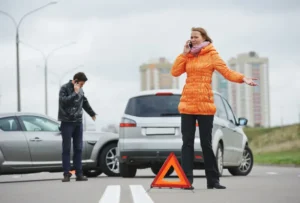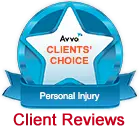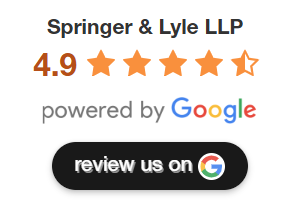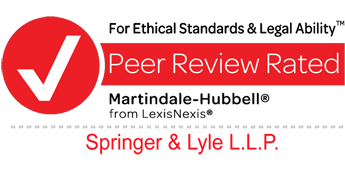What To Do If You Are In A Car Wreck~5 min read

If you are like the majority of the population, you spend a great deal of time in your vehicle. With all of daily commuting to work and/or school, running errands and vacationing, the chances are fairly high that you will be in at least a minor car wreck at some point in your life. Because of distracted driving due to cell phones, the chances of being in an accident are increasing regardless of how responsibly or defensively you drive. A car accident can happen at any time, so it is essential to know what to do if you are in a car or truck accident and the importance of contacting either Frank Lyle or Jeff Springer at Springer & Lyle to make sure your personal injury case is handled professionally and ethically.
Immediately Upon Impact
Being in a car wreck can be a scary and jarring experience, but it is important for your safety to remain as calm as possible. You should never leave the scene of the accident, even if it was the fault of the other driver. If you leave and someone has sustained injuries or was killed, you may face serious penalties, especially if you were at fault. Immediately after impact, take a deep breath and, if you are able, turn on your hazard lights.
Checking For Injuries
At the time of the car wreck, it is normal to be a little shaken and upset, but it is essential to make sure you, your passengers and any other people involved in the accident are okay. If you suspect there are physical injuries, do not get out of your vehicle, instead immediately call 9-1-1 and request an ambulance and the police. If you are able to get out of your car, talk with the other driver to find out if they are injured. In some situations, such as on a busy highway, it is usually safer to remain in your car and mouth the words to the other driver “are you okay”?
Moving Your Vehicle
If you are unharmed, the accident is minor and your vehicle is in an intersection or on a busy road, you can move the car to a parking lot, off of the road or to a driveway. If possible, use your cellphone to take a picture of the accident scene and the position of the cars before either vehicle is moved. Make a note of the location, including exactly where the accident occurred, the nearest cross street and what direction you were traveling before the car accident. This information is extremely important, especially if the other driver was at fault, because you may be entitled to compensation for damages to your vehicle, personal injuries and/or other expenses. When you contact a personal injury lawyer, such as Springer & Lyle, this information will be beneficial to your case.
Gathering Information
It is important to have as much information as possible about the car accident when you go to the consultation with your personal injury attorney. Springer & Lyle will be able to obtain most, if not all of the information you are unable to get at the time of the accident. While on the scene of the accident, it is important that you only get the necessary information regarding the truck or car accident. Be careful what you say. Statements such as, “I am so sorry” or “I think I ran a stop sign”may be considered your admission of legal liability for the accident. When talking to other drivers and/or police on the scene, be polite and cooperative, tell the truth but do not speculate, and do not volunteer information that may be considered an admission of guilt, especially if you believe the other person was partly or totally responsible. The information you should get includes:
- The other driver’s name, address, birth date, driver’s license number, telephone number and insurance company.
- The make, model, year and license plate number of the other vehicle.
- The name, address and telephone number of all passengers in both vehicles.
- The names, telephone numbers and addresses of anyone who witnessed the accident.
- The badge number and name of all police officers who came to the accident. Remember to ask the officer when you can get a copy of the police report.
- If at all possible, draw a simple diagram of the accident, including the position of all vehicles involved before, during and after the car wreck, skid marks, stop signs, traffic lights and etc.
- If your cellphone takes pictures or if you have a camera with you, take several pictures of the scene; getting as much information of the area as possible in the pictures.






